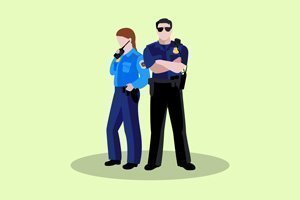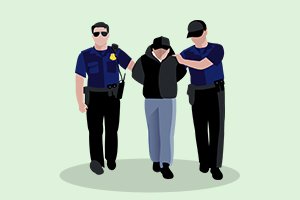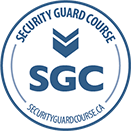Private security guards are critical to maintaining the safety of people and the protection of property in a variety of settings, from retail malls, to office buildings, and more.
With such responsibility, it is no surprise that this is a role bound by strict regulations. Presently, the role of security guards and private investigators in Ontario is regulated through the Private Security and Investigative Services Act,2005 (PSISA).
Along with outlining the roles, conduct and training requirements, the PSISA also includes various restrictions on security guards and security companies. In this post, we will explore the restrictions around how private security professionals can identify themselves to the public, particularly regarding their titles.
The Background of the Private Security and Investigative Services Act, 2005
The PSISA was introduced in 2005 to serve as the backbone of the entire private security industry in Ontario. The goal was to modernize the regulations and enhance the credibility, and reputation of the security industry, by ensuring that certain professional standards are met. These standards include the importance of transparency, public safety, and a clear distinction between public law enforcement and private security professionals.
A key regulation of the PSISA revolves around how security guards can identify themselves to the public. Most notably, it places restrictions on the job titles that security guards may use, so that there is no confusing them for police officers.
“Security Guard” vs. “Security Officer”
Prior to the enactment of the PSISA, security guards had much more freedom in what they could call themselves. Many chose to identify as a “security officer”, versus “security guard”. That changed with the PSISA.
Under Section 40 of the PSISA, security guards in Ontario must explicitly identify themselves as “security guards”. They can no longer use the title “security officer”, or any other term that might imply that they possess law enforcement-level authorities.
40 No private investigator, security guard or person who engages in the business of selling the services of private investigators or security guards shall use the following terms or variations of them:
1. Detective or Private Detective.
2. Law enforcement.
3. Police.
4. Officer. 2005, c. 34, s. 40.
This restriction aims to create a clear distinction between public law enforcement officers, such as police, and private security professionals. Public law enforcement officers have specific and expanded authorities granted to them in law, such as making arrests on reasonable and probable grounds, laying criminal charges, and conducting investigations. Security guards, by contrast, have no more authority under the law than do every other private citizen. Therefore, the PSISA helps to ensure that security guards are not misrepresenting their role or authorities.
The Impact on Loss Prevention
The PSISA does not distinguish between specific security guard roles. The only distinction is between security guards and private investigators. Each carries their own training and licensing requirements. Therefore, the popular title “loss prevention officer” is also no longer acceptable. While this restriction has not changed the roles and responsibilities of these professionals, it has altered their titles.
It is now common to see loss prevention personnel referred to as “Loss Prevention Guards”, “Asset Protection Associates”, or simply “Loss Prevention Personnel”. Keeping the term loss prevention, or asset protection emphasizes their role in observing, deterring, and reporting incidents of theft, while not running afoul of Section 40 of the PSISA.
Why These Restrictions Are Important
The decision to include these title restrictions were not arbitrary. They are intended to serve several important purposes:
Preventing Public Confusion: In the past, private security “officers” often wore uniforms that closely resembled police uniforms in color, and style. The PSISA set out to create clear distinctions between the two professions. Forbidding the use of the word “officer”, insisting instead on “guard” is one of the primary methods.
Clear directions on what uniforms must, and must not, have is another. For example, uniforms must have the title “Security Guard”, or “Security” visible on the chest and back of the outermost piece of clothing. The PSISA direction also includes minimum sizes for these titles.
Limiting Potential Liability: Any misrepresentation of authority, even when unintentional, can lead to legal implications for security companies and its security guards. The idea is that, by enforcing specific job titles, the security guard will have a clear understanding that their authorities and roles are less than that of a police officer.
Further, the PSISA, along with other legislation, imposes penalties for security companies and security guards who exceed their lawful authorities.
Clarifying the Role of Security Guards: While the private security industry plays a vital role in protecting the public and supporting law enforcement, it is not a substitute for public law enforcement such as the police. The language and regulations of the PSISA clarifies that private security guards do not have the same powers as a peace officer. This distinction is crucial for making it clear to the security guards working in the industry where the limits of their authorities lie.
Uniform and Badge Restrictions
In addition to the restrictions on job titles, the PSISA also regulates the security guard’s uniforms, badges, and other identifiers. Under O. Reg. 362/07 of the PSISA, security guards must wear uniforms that clearly display the word “Security”, or ”Security Guard” on both the front and back, and in specific minimum sizes.
The guard’s name, or badge number must also be affixed to the chest of the outermost article of clothing. The shirts must not be black or navy blue. The trousers must not have stripes, unless they are reflective safety stripes. Uniforms must not include chevrons, and security guards may not wear a police-style forage hat.
Similar rules apply to security vehicles as well, under O. Reg. 364/07. Both of these regulations are meant to ensure that the public does not confuse security guards with police officers.
Communication with the Public
When interacting with the public, security guards must not identify themselves as peace officers, or imply that they hold more authority than they actually do. Under Section 35 of the PSISA, security guards must carry their security licence with them when on duty, and present it when requested.
The requirement to hold a physical licence acts as a symbol to show that the security guard has met a training and education standard, and is accountable for their decisions, and actions under provincial legislation.
Legal Authorities and Limitations
Security guards in Ontario operate under the same limited legal authorities as any private citizen, particularly when it comes to powers of arrest. Security guards find their “citizen’s arrest” authority under Section 494 of the Criminal Code of Canada. This authority requires that the security guard witness a crime being committed, or have reasonable grounds to believe that someone has committed a crime, and is actively trying to escape from lawful arrest.
In the chaotic and fast-paced environment that often surrounds criminal acts, it is important that the public be reminded that there are many differences between a security guard and a police officer, including the legal options available to manage various situations. Generally, the role of the security guard is to deter crime, observe, and report incidents to the police. The PSISA endeavors to accomplish this by creating clear distinctions between them.
Training and Compliance
To ensure compliance with these standards, the PSISA mandates comprehensive training for security guards, such as the courses offered through SecurityGuardCourse.ca. This training includes knowledge of the PSISA, legal authorities, use of force, and communication and de-escalation. Once the training is completed, would-be security guards must pass a written exam to obtain their security guard licence.
Implications for Security Guards and Employers
For security guards, it is critical that they understand the regulations and restrictions surrounding their roles. Identifying themselves as a “security officer” may seem like a minor thing, but it could result in disciplinary actions including fines, or the suspension of their licence. Security guards must always identify themselves in accordance with the rules and regulations of the PSISA, in order to remain in compliance, and maintain the integrity of their role.
For loss prevention professionals as well, this has meant adjusting to new titles such as “Loss Prevention Guard”, or “Asset Protection Specialist”, rather than the once common “Loss Prevention Officer”.
For employers, it is critical that their staff adhere to the PSISA. They must also provide proper training, and ensure that all uniforms, and vehicles are in full compliance. Non-compliance can lead to serious consequences for the security company as well.
Conclusion: The Importance of Proper Identification
The Private Security and Investigative Services Act sets strict guidelines on how security guards and security companies can identify themselves to the public. This includes excluding the use of the word “officer” in all oral or written communication. These regulations are intended to draw a clear distinction between the role of public police officers, and private security guards in Ontario.
The Ministry of the Solicitor General in Ontario is responsible for overseeing compliance with the PSISA, and has the authority to conduct inspections, investigations, and may impose fines, or suspend licences when violations are found.
Ultimately, these measures help establish a clear distinction between the two roles, which helps to maintain their integrity. By understanding these restrictions, security guards and loss prevention professionals can contribute to a safer environment for everyone, while performing their duties with transparency and professionalism.
References
Government of Canada (n.d.). Criminal Code (R.S.C., 1985, c. C-46). Justice Laws Website. Retrieved October 15, 2024, from https://laws-lois.justice.gc.ca/eng/acts/C-46/section-494.html
Government of Ontario (n.d.). O. Reg. 362/07: UNIFORMS. Ontario Laws. Retrieved October 15, 2024, from https://www.ontario.ca/laws/regulation/070362
Government of Ontario (n.d.). O. Reg. 364/07: VEHICLES. Ontario Laws. Retrieved October 15, 2024, from https://www.ontario.ca/laws/regulation/070364
Government of Ontario (n.d.). Private Security and Investigative Services Act, 2005, S.O. 2005, c. 34. Private Security and Investigative Services Act, 2005, S.O. 2005, c. 34. Retrieved October 15, 2024, from https://www.ontario.ca/laws/statute/05p34#BK49








